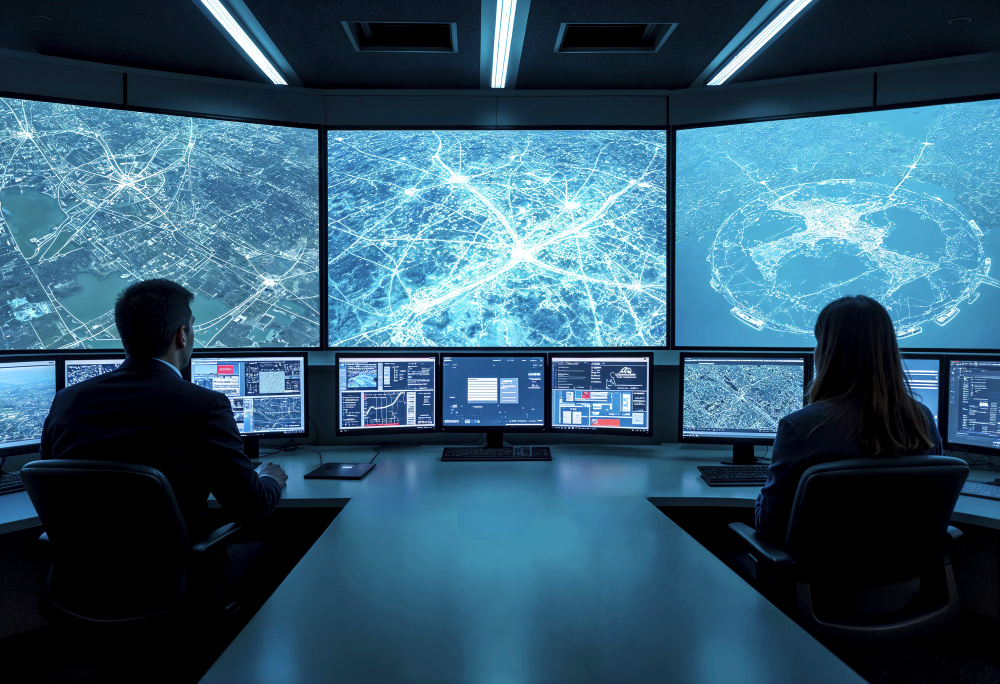
In today’s rapidly changing world, high-risk sectors such as energy, banking, government facilities, and transportation face unique and growing challenges when it comes to maintaining security. Traditional measures are no longer sufficient to deal with threats that can be physical, digital, or even reputational. This is where command center security solutions come into play, providing a centralized hub for monitoring, decision-making, and response. By integrating technology with skilled manpower, these centers are becoming essential for safeguarding critical infrastructure and ensuring continuity of operations.
Command centers act as the nerve center of security operations. They combine real-time monitoring, communication tools, and rapid response mechanisms to protect assets and people. Whether it is preventing unauthorized access, mitigating cyberattacks, or coordinating emergency evacuations, a well-structured command center ensures that every action is data-driven and timely. For businesses and organizations operating in high-risk environments, having such a solution in place is no longer optional, it is a necessity.
One of the most important aspects of command center operations is their contribution to workplace safety. A centralized system allows for continuous monitoring of facilities, which helps identify risks early and implement corrective measures before they escalate into serious issues. For employees working in sensitive sectors, knowing that security is actively managed around the clock builds confidence and allows them to focus on their responsibilities without distraction.
Best Practices for Command Center Security
When implementing command center solutions in high-risk sectors, organizations should consider several best practices to maximize their effectiveness:
- Integrate Physical and Cybersecurity: Security threats are not confined to one domain. Combining physical access controls with cybersecurity monitoring creates a comprehensive shield.
- Leverage Data Analytics: Using AI and data analytics allows command centers to anticipate threats rather than just react to them. Predictive models can highlight unusual behavior patterns that might indicate potential risks.
- 24/7 Monitoring and Response: A command center must operate around the clock, ensuring that no incident goes unnoticed. Timely response can make the difference between a minor disruption and a major crisis.
- Customized Solutions: Every sector faces unique challenges. For example, a power plant might require different protocols compared to a financial institution. Tailoring solutions ensures efficiency.
- Staff Training: Technology is only as effective as the people managing it. Regular training equips staff to handle emergencies, use advanced tools, and coordinate seamlessly.
For many organizations, managing such complex operations internally can be overwhelming. This is why outsourcing security to professional providers has become a popular option. Expert partners bring in advanced technologies, trained personnel, and specialized knowledge that can reduce operational burdens and enhance overall effectiveness. Outsourcing also ensures scalability, allowing businesses to upgrade or modify their security systems as threats evolve without making massive internal changes.
Command center solutions are also vital in strengthening collaboration between various stakeholders. Whether it is coordinating with local authorities, sharing intelligence across different facilities, or ensuring compliance with national security regulations, these centers act as a bridge. They provide a clear chain of command and ensure transparency in decision-making, which is critical during emergencies.
Furthermore, the role of command centers is not restricted to crisis situations. They also play a vital role in day-to-day operations such as access management, visitor verification, asset tracking, and routine safety checks. By continuously optimizing processes, they contribute to operational efficiency in addition to enhancing protection.
Conclusion
High-risk sectors cannot afford to take a passive approach to security. The complexity of threats demands proactive, technology-driven solutions that can adapt to changing scenarios. Command center security solutions provide the backbone for such efforts by combining surveillance, analytics, skilled personnel, and quick-response systems under one roof.
Through practices like integration of cyber and physical security, outsourcing specialized services, and collaborating with an integrated security company, organizations can achieve stronger resilience. In the long run, these solutions not only protect assets and people but also build trust, ensure compliance, and support business continuity in environments where the stakes are too high for compromise.
